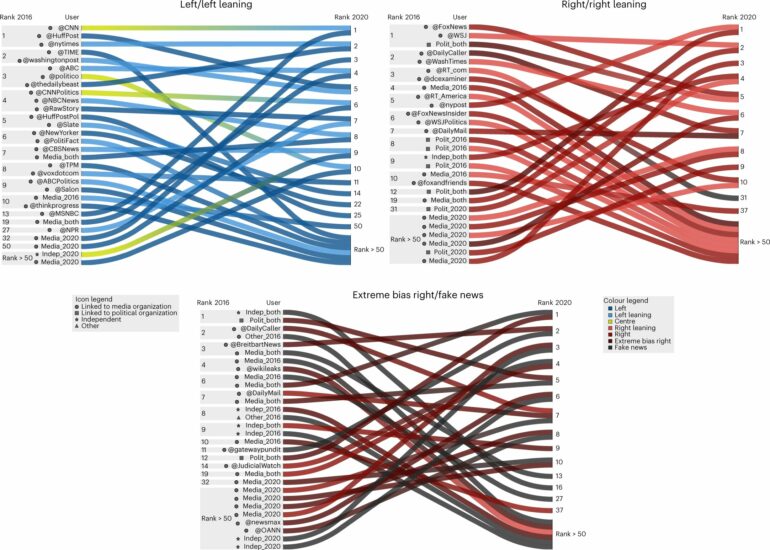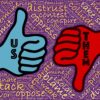“One side can start the polarization and keep it going forever, but it takes two sides to stop it. That’s why it easily arises, but it’s so difficult to end,” Boleslaw Szymanski said. Szymanski is the Claire & Roland Schmitt Distinguished Professor of Computer Science and director of the Network Science and Technology Center at Rensselaer Polytechnic Institute.
At a time that some describe to be the most deeply polarized in the United States since the Civil War, Szymanski and his research team spent the last two years analyzing vast amounts of Twitter data to examine the social media platform’s influence on U.S. politics. The results are published in the journal Nature Human Behaviour.
The dataset from 2016 contained 171 million tweets sent by 11 million users, and that of 2020 contained 702 million tweets sent by 20 million users. The disparity is because of the platform’s increase in users. Collecting data from two subsequent elections enabled the team to see trends in participation, polarization, and stability of different kinds of influencers, users, and topics. In a broader sense, it revealed the role that the social media platform played in the elections.
The news was both good and bad.
On one hand, the amount of fake and extremely biased content decreased by 2020 compared to 2016, perhaps because of Twitter’s efforts to limit disinformation from going viral. The volume of tweets linking to disinformation websites dropped by half and the number of users sharing fake news dropped even more.
On the other hand, users in 2020 were less likely to share information or interact with users who do not share their political beliefs than they were in 2016. It created an echo chamber for users with the lack of contrary views.
“Even without sending fake news and just propagating selected one-sided facts, influencers can create a mosaic that is not real,” Szymanski said.
Another interesting finding was that a large fraction of top influencers unaffiliated with the media or party organizations in 2020 rose from obscurity, while some influencers affiliated with such organizations joined the extreme bias right and fake news categories.
“Dr. Szymanski’s research comes with a lesson for voters in 2024: check your facts, do your research, and don’t believe everything you read,” said Curt Breneman, dean of the Rensselaer School of Science. “It is also a call to action for government officials and tech executives to ensure that the flames of polarization are not fanned.”
More information:
Hernán Makse, Political polarization of news media and influencers on Twitter in the 2016 and 2020 US presidential elections, Nature Human Behaviour (2023). DOI: 10.1038/s41562-023-01550-8. www.nature.com/articles/s41562-023-01550-8
Provided by
Rensselaer Polytechnic Institute
Citation:
Fake and extremely biased Twitter content decreased between 2016 and 2020, but top influencers were more polarized (2023, March 14)



